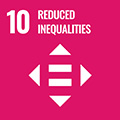- Docente: Rossella Nancy Maria Mazzaglia
- Credits: 6
- SSD: L-ART/05
- Language: Italian
- Teaching Mode: In-person learning (entirely or partially)
- Campus: Bologna
-
Corso:
First cycle degree programme (L) in
Drama, Art and Music Studies (cod. 0956)
Also valid for First cycle degree programme (L) in Drama, Art and Music Studies (cod. 0956)
Learning outcomes
At the end of the course students acquire a basic knowledge of the modes of organization of the theatre space in relation to the different places and buildings from the Ancient times up to day. They will also learn about the main critical sources, as well as technical and terminological skills.
Course contents
After a brief historical excursus, illustrating the heterogeneity of the theatrical spaces in time, and the critical categories for their analysis from a historiographic perspective, the relationship between the phenomenology of theatre spaces and the forms of spectatorship will be observed in a dedicated monographic part. Most specifically, we will focus on the ethical, social and political aspects connected to processes of relocation of performative art from the theatrical buildings and from the main cultural centers, to participatory formats, site-specific creations, and multimedia theatre and dance models, and consider their ethical, social and political significance through relevant cases studies of the second half of the Twentieth century and of the new Millennium that lead to rethink the very concept of theatrical space.
Readings/Bibliography
The bibliography is made of a textbook, a reader (available online after January 2022) and the class notes. Non attending students will add further study material as indicated below:
A. Textbook: Cruciani Fabrizio, Lo spazio del teatro, Laterza, Roma-Bari, 1998;
B. Reader: Rossella Mazzaglia (a cura di), Lo spazio espanso del teatro (available in January 2022)
C. Notes from class
Non attending students are required to read the material above and add t: De Marinis Marco, Le Rivoluzioni del Novecento, in AA.VV. Breve Storia del Teatro per Immagini, pp. 247-313; Stefano Casi, 600000 e altre azioni teatrali per Giuliano Scabia, Edizioni Ets, Pisa, 2012.
Teaching methods
The teaching will be carried out online.
Assessment methods
The exam consists of an oral exam.
Students are requested to identify artists and themes and to connect them to their historical, cultural and aesthetic context. They should prove to be able to make connections between the various sources.
Proper language and the ability to critically speak about the texts content will lead to a good/excellent final grade.
Acceptable language and the ability to resume the texts content will lead to a sufficient/fair grade.
Insufficient linguistic proficiency and fragmentary knowledge of the books' content will lead to a failure in passing the exam.
Teaching tools
During the classes, audio-visual sources and primary written, oral and media sources will be used. The e-learning page will also serve as a platform to share material and communications.
Office hours
See the website of Rossella Nancy Maria Mazzaglia
SDGs



This teaching activity contributes to the achievement of the Sustainable Development Goals of the UN 2030 Agenda.
